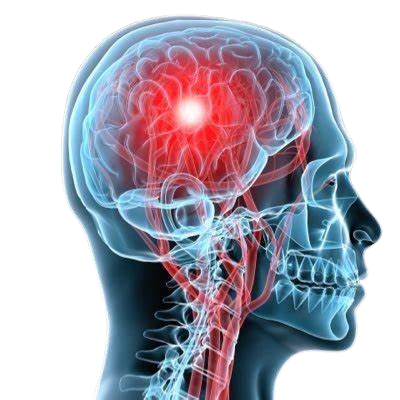
Stroke: How to Detect and Respond
What is it:
A stroke occurs when blood flow to a part of the brain is interrupted, either due to a blocked artery (ischemic stroke) or bleeding within the brain (hemorrhagic stroke). This interruption prevents essential oxygen and nutrients from reaching brain cells, leading to cell damage or death. As a result, the brain's ability to control movement, speech, and cognition can be severely impaired. Recognizing stroke symptoms is critical for timely medical intervention. Immediate action is necessary to minimize long-term disability and improve recovery outcomes.

Types of Stroke:
There are two primary types of strokes, each with distinct causes:
- Ischemic stroke happens when a blood vessel in the brain becomes blocked, often by a blood clot or fatty deposits known as plaque. This blockage restricts blood flow and deprives brain cells of oxygen, leading to potential brain damage.
- Hemorrhagic stroke occurs when a weakened blood vessel bursts, causing bleeding in or around the brain. This type of stroke is commonly associated with high blood pressure, aneurysms, or other vascular malformations, which can increase the risk of vessel rupture.
Who is at Risk:
Being overweight or obese, diabetes, high blood pressure, high cholesterol, physical inactivity and smoking, older age and family history
Signs and Symptoms of Stroke:
- Sudden numbness or weakness: One side of the face, arm, or leg suddenly becomes numb or weak which is a hallmark sign of a stroke.
- Confusion or trouble speaking speaking or understanding speech can manifest as slurred speech or the inability to form coherent sentences
- Trouble walking or loss of balance: A sudden onset of dizziness, lack of coordination, or difficulty walking may result in stumbling or falling.
- Problems seeing in one or both eyes: blurred or blackened vision in one or both eyes or may see double.

During a stroke, every minute counts. Here are additional steps you can take:
If you are having symptoms:
- Immediately share with someone nearby (family, neighbour, colleague, or friend).
- Try to stay where you are to avoid falling or injuring yourself further. Sit or lie down in a comfortable position.
If someone else is having a stroke:
- Call for help from neighbours, friends, or family to assist.
- Reach out to family doctor (Video call): Share symptoms and take advice.
- Talk to the patient, and gather more information this will help in briefing the doctor.
- Stay calm: Keep the person calm and reassure them. Avoid giving them food, drink, or medication unless advised by a medical professional.
- Note the time: It is essential to know when the symptoms first appeared, as this information helps healthcare providers determine the best course of treatment.
- Do not wait to see if symptoms improve : Take immediate action. Even if symptoms seem to improve, it is crucial to seek a professional medical evaluation.
- Avoid delay by waiting for an ambulance: Drive the patient to the recommended hospital where there is MRI & CT Scan facility. Inform the emergency department.
Unlike heart attacks where individuals might take aspirin, there is no immediate home treatment for strokes. The first hour after stroke symptoms begin is crucial for treatment. Rapid medical intervention can significantly improve recovery chances.
How is Stroke Diagnosed:
- Physical exam
- Blood tests
- CT or MRI scans
- Carotid ultrasound check for blockages in arteries
- Echocardiogram look for blood clots or heart abnormalities
Treatment:
Effective treatment for a stroke starts with a quick assessment to identify the type of stroke, followed by immediate care.
The specific treatment depends on the type of stroke:
- For Ischemic Stroke (caused by blood clots):
- Blood thinners : These may be given through an IV to help dissolve the clot.
- Direct injection: Sometimes, blood thinners are injected directly into the clot.
- Thrombectomy: A thin tube (catheter) is used to remove the clot from the brain.
- For Hemorrhagic Stroke (caused by bleeding):
- Surgery: This may be needed to remove excess blood from the brain.
- Craniotomy: A small part of the skull may be removed to relieve pressure from swelling.
Preventive Measures:
- Manage blood pressure and cholesterol
- Exercise regularly
- Control diabetes
- Avoid smoking and limit alcohol
- Adopt a healthy diet and maintain a healthy weight
Most stroke risk factors do not have noticeable symptoms and can lead to a stroke without warning. Regular check-ups are the best way to identify risk factors and prevent strokes.
 Back
Back